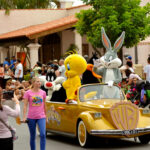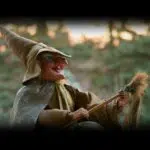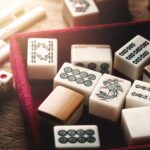National Mahjong Day is celebrated annually on April 30. Mahjong is a tile-based game that has been around since its advent in the 19th century in China, and it remains popular all over the world, but especially so in Asian countries. Traditionally, it’s a four-player game, though there are some three-player variations in China, Japan, South Korea, and Southeast Asia. The game is played with a set of 144 tiles originally based on Chinese characters and symbols. In the beginning, each player is given 13 tiles, and their objective is to draw and discard tiles until they complete a legal hand, using the 14th drawn tile to form four sets and a pair (known as ‘melds’ and ‘eye’), respectively.
History of National Mahjong Day
Mahjong is based on card games popular in China in the 18th and 19th centuries, such as Khanhoo and Pènghú, which are mahjong’s most likely ancestors. They’ve been compared with the western card games Conquian and Rummy, as they all involve drawing and discarding cards to make melds. Nobody is sure when the conversion from cards to tiles happened, but it’s estimated to have happened in the middle of the 19th century. The earliest surviving tilesets date from around 1870 and were found in Fuzhou, Shangai, and Ningbo. These sets were different from the ones used today in several ways — some tiles were missing and some were placed differently, others shared the titles of the leaders of the Taiping Rebellion. (It’s believed that they were removed after the rebellion ended.)On October 1, 1949, the People’s Republic of China was founded. One of their new laws was a ban on gambling, which resulted in a decline in the game. The game became altogether illegal during the Cultural Revolution of 1966. The ban wasn’t lifted until 1985. Nowadays, the game has become a favorite pastime in China.In the West, the first records about Mahjong come from the papers of British Consul General F. E. B. Harvey, from when he served as consul in Ningbo, in the 1860s. He became an acquaintance of an English-fluent official under the Daoguang Emperor, who taught him the game. He then described the rules of the game in a series of papers.In 1920, Mahjong sets began to be imported to the U.S., and it became a fad for the rest of the decade. It became a central part of cultural bonding for Chinese Americans in the 1920s and ’30s, in Chinatown, Manhattan, and was part of community building for suburban American Jewish women in the 1940s and ’50s. Mahjong nights in America often involved dressing and decorating rooms in Chinese style. The rules of the American variant became standardized with the formation of the National Mah Jongg League in 1937. In 1986, the N.M.J.L. conducted its first Mah Jongg Cruise Tournament. In 1999, a second organization was formed, the American Mah Jongg Association, which currently hosts tournaments all across North America.
National Mahjong Day timeline
‘Pènghú’ is said to be its most likely ancestor.
British Consul General F. E. B. Harvey serves as consul in Ningbo — he’s taught the game by an official and writes the rules in his papers.
Found in Fuzhou, Shangai, and Ningbo, some tiles are different from the sets used today.
The game becomes very popular, especially among Jewish women, and Mahjong nights involve dressing and decorating rooms in Chinese style.
The first American Mahjong rulebook publishes; with this, the American variant becomes standardized.
The game is banned in the country until 1985.
The first tournament is held and is conducted by the National Mah Jongg League.
National Mahjong Day FAQs
Why is it called mahjong?
In Chinese, the name is translated as ‘sparrow.’ It’s said that the clacking of the tiles resembles the sounds these birds make.
Can you play Mahjong alone?
Yes, Mahjong Solitaire can be played either solo or with a partner. It’s played with the same tiles as Mahjong Rummy, but their rules are entirely different.
How do you call ‘riichi?’
To call ‘riichi’ right before you discard a tile, place a 1,000-point stick out in front of your hand and turn the discarded tile sideways to indicate that ‘riichi’ was called.
National Mahjong Day Activities
-
Learn to play Mahjong
It doesn’t matter if you’ve never played before — you too can celebrate by just giving it a try. Destination Mah Jongg is an online community that connects you with fellow players in your area, and they host a Learn to Play Mah Jongg Clinic on National Mahjong Day. You can also learn on your own for free through YouTube videos and through playing Mahjong on your browser or smartphone.
-
Join an event
Find out which place near you is hosting an event for National Mahjong Day, and join them. It doesn’t have to be a competitive tournament; they probably also have tables for casual play, which is a good opportunity to meet new people with similar interests.
-
Teach Mahjong to others
It’s not just about playing —you can also offer to teach your friends and family. Share this wonderful game with more people! You can also offer to teach beginners at an event. Just ask the organization hosting if they need any more instructors!
5 Little-known Facts About Mahjong
-
There are 25 recognized variations
Some of these include American Mahjong, Competition Mahjong, and Pussers bones.
-
Tiles were originally made out of bone
Nowadays, they are mostly made out of plastic.
-
The first world tournament was in Japan
The World Mahjong Championship was held in Iidabashi, Tokyo, over three days in 2002, and the winner was the Japanese player Mai Hatsune.
-
The longest mahjong marathon lasted 33 hours
On December 16, 2012, Oleg Petrov, Anton Khantimirov, Nickolay Demyanov, and Mark Efremov from Russia played for 33 hours, three minutes, and 45.8 seconds.
-
Some believe Confucius invented the game
Historians say that the three dragon tiles represent the philosopher’s teachings on the three essential virtues: sincerity, filial piety, and humaneness.
Why We Love National Mahjong Day
-
The game encourages many skills
Tactics, observation, memory, pattern recognition, and adaptive strategies are some of them. Playing and getting better at it can help us improve these skills, which can be very useful for our daily life.
-
It’s a chance to share Mahjong with others
Let’s be honest: when you first look at the tiles, it seems way more complicated than it really is. But a good teacher can break that barrier. Teaching your friends and family how to play is a good bonding experience, and if they get good, you might get new rivals too!
-
Mahjong is a way of connecting to Chinese culture
Broadening your horizons and learning about other cultures is always a great thing. You don’t even need to read up on the history of Mahjong. Just by looking at the tiles, you’re exposed to so much of China’s culture, such as the Chinese language characters, flowers, landscapes, symbols, etc.
National Mahjong Day dates
| Year | Date | Day |
|---|---|---|
| 2023 | April 30 | Sunday |
| 2024 | April 30 | Tuesday |
| 2025 | April 30 | Wednesday |
| 2026 | April 30 | Thursday |
| 2027 | April 30 | Friday |





























